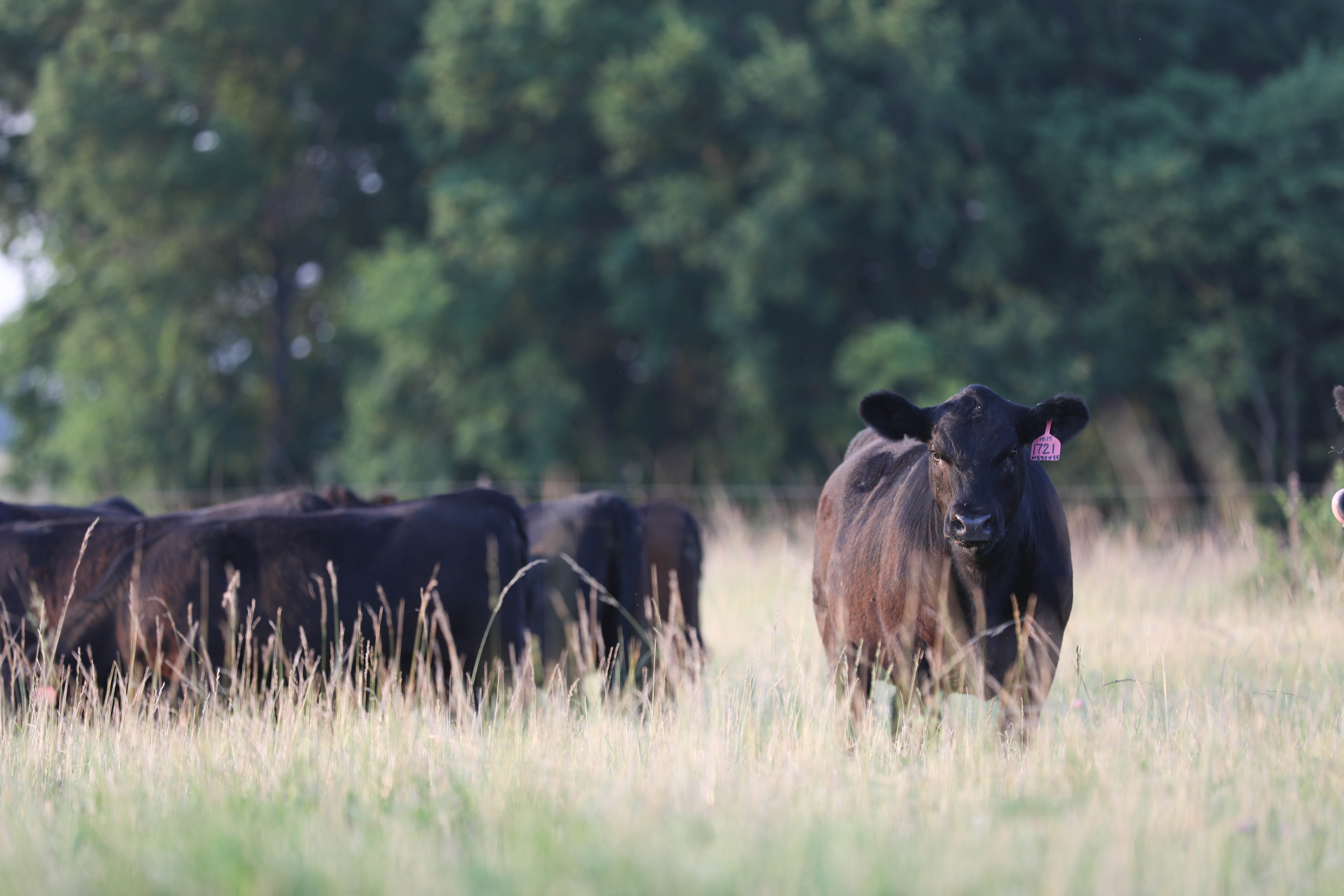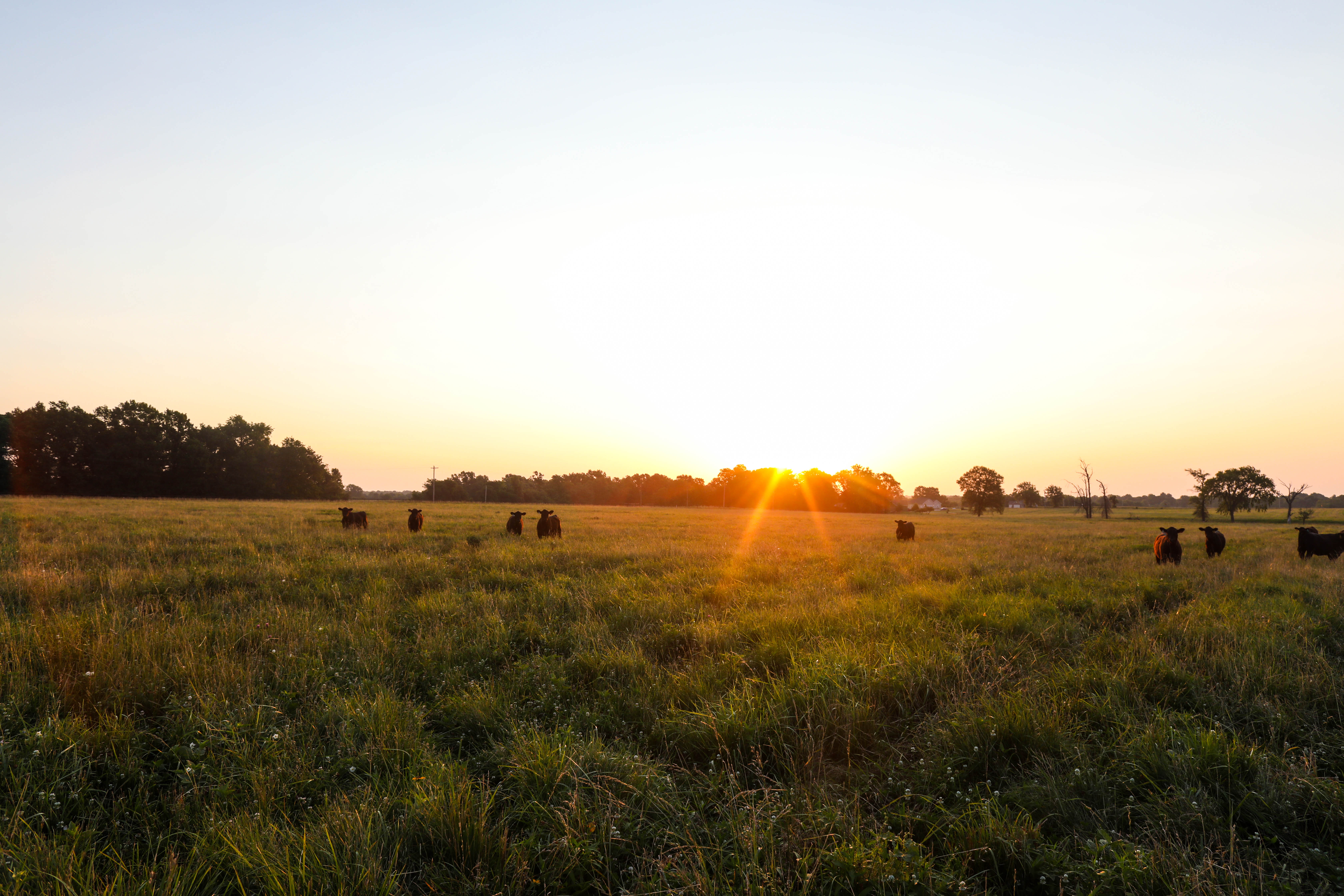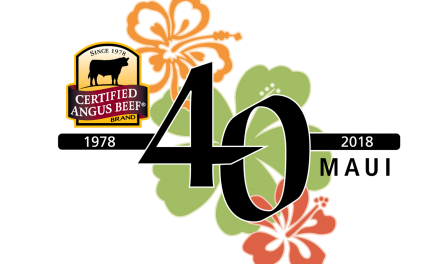by Nicole Lane Erceg
To the naked eye, it probably looked just like a mess of weeds. In 1994, Kenny Hinkle saw the pasture near Nevada, Mo., as his own Wild West waiting to be tamed. The land was barren: no fence, no barn, no cattle working pens. There wasn’t even a house. Cattle didn’t pay the bills yet and his swing shift at 3M in town kept him occupied during most daylight hours. Hinkle purchased the 30 acres anyway, and proved a lot can get done between 8 p.m. and 3 a.m. Cows were bred, a house was built and fence and working facilities slowly grew from the midnight oil he burned. In those days, wife Janyce says they mainly communicated through notes left on the kitchen counter. What chores he couldn’t finish, she added to her list. Her work checking heats, moving cattle and feeding bulls became vital to maintain the growing herd at home.
For all of that and today’s reality forged from years of diligence, the Hinkles earned the 2018 Certified Angus Beef ®(CAB®) Progressive Partner Award. They accepted the honor on Sept. 28, during the brand’s annual conference in Maui, Hawaii. There was no big vision at the start, only a passion for Angus cattle. It began by just selling a few bulls to folks down the road. The pennies earned were reinvested into the business, helping him get better each year, adding more value with each new mating. Over the years, the seeds Hinkle planted grew to a flourishing business that markets 300 Angus bulls annually — the now-veteran cattleman develops them all on or next to his original 30 acres.
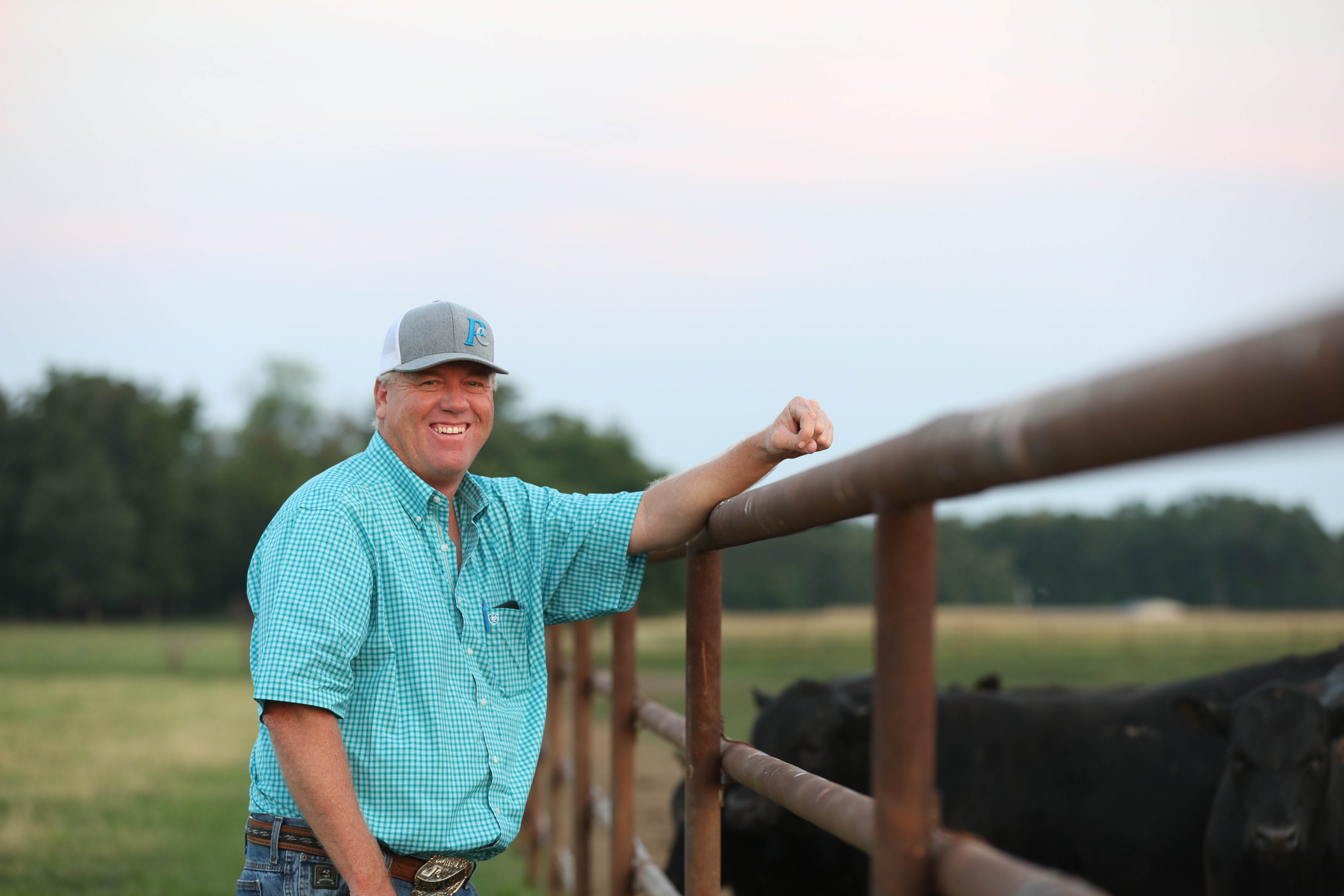
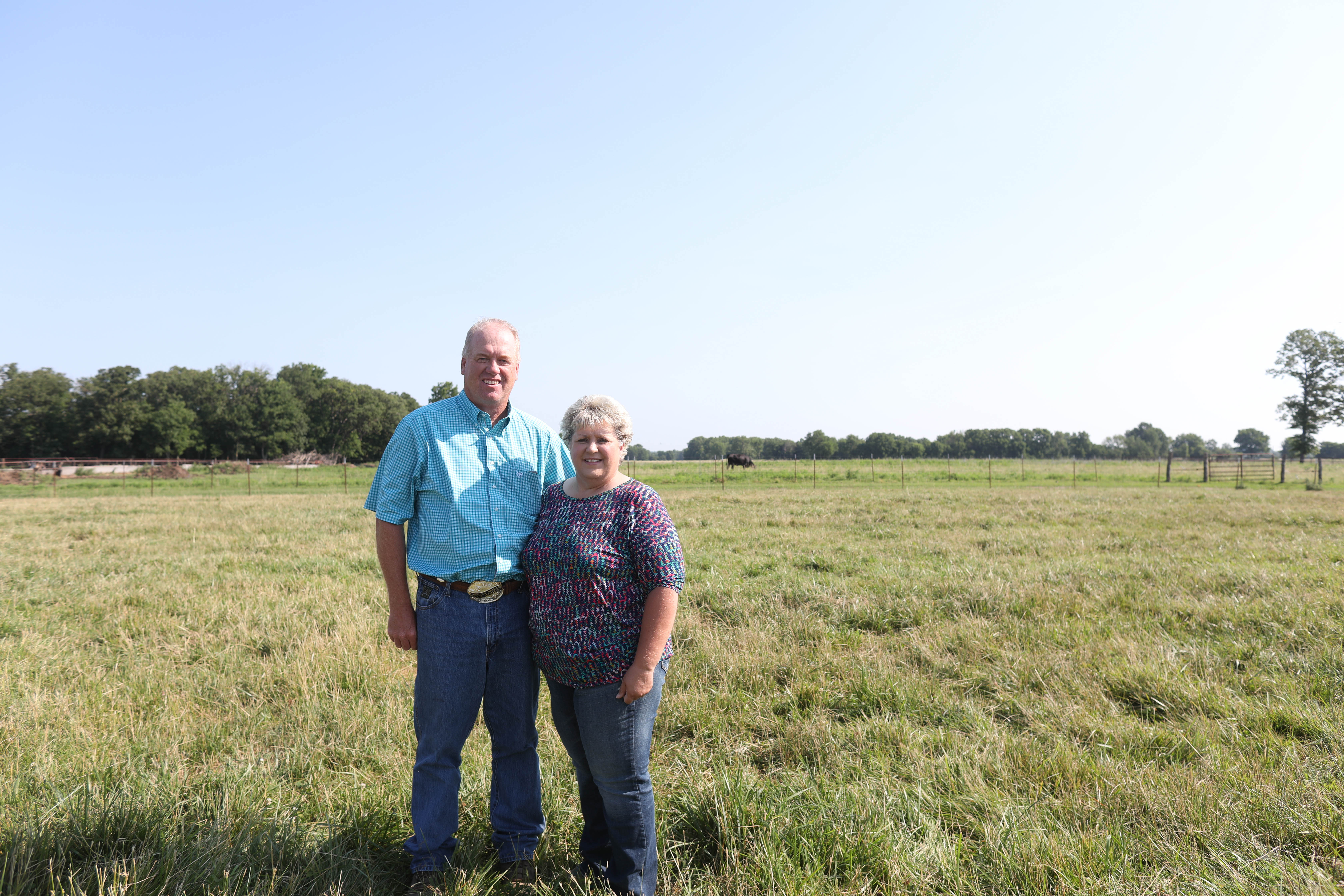
His bulls are entirely the product of artificial insemination (AI) and embryo transfer (ET). The massive registered cow herd doesn’t exist. “It’s hard to find a registered female here over four years of age that’s not a recip,” Hinkle says. “We don’t have a big cow herd because we don’t have anywhere to put them.” The cow herd and bulls are developed on about 500 acres of forage and through the help of a few local cooperating herds. “If we can produce 200 calves a year out of 12 elite cows, we’re putting a very good product out there,” he ways. Flip through the pages of the Hinkle’s Prime Cut Angus (HPCA) sale catalog and you’ll find more than expected progeny differences (EPDs) and genomic profiles. There’s a carcass data record, showing his bull customers’ past feedlot and rail performance. “Some years the only way these guys make money is by feeding these cattle, and it’s because these cattle feed well,” Hinkle says.
The status quo isn’t an acceptable option – for the HPCA crew or their customers. “Anyone can make a hamburger and I think that’s the mindset we take,” says his son, Trevor. “Where people are really going to make the money is Choice and Prime cuts and figuring out how to make those more and consistently better.” The father-and-son team work in tandem with Hinkle’s son-in-law, Blake Baker. “Carcass merit and quality is a motivating factor because our customers can get paid more for it,” Baker says. “Average is low, for what a lot of these guys can do. Seeing them get $200 more per head in premiums is something we’re proud of and it helps take some of the risk out of it for them.”
Customer Jeremy Zoglmann raises his Angus herd on the other side of town from Hinkle. He set his sights on calves that qualify 60% or more for CAB, with a goal of 20% Prime. He began retaining ownership in 2013 after a nudge from Hinkle, and the first carcass report came back 100% Choice or better. In recent loads fed, Zoglmann hit his target and earned as much as $280 in premiums per head above what he’d get paid marketing them live. “I know I’ve hit my mark when I see my customers’ kill data,” Hinkle says. “I’ve got the genomics, the ultrasound numbers, but nothing shows success like that individual performance data.”
Words like “maternal” and “terminal” aren’t what Hinkle will use to describe his program. It’s a collective mission to produce a calf that comes easy and grows rapidly with the genetic capacity to excel in performance and profitability at every point in the beef supply chain. “Some people call them carcass cattle, I just call them good cattle,” he says. “Don’t tell me we can’t raise cattle in this breed that do everything and still have marbling.” It doesn’t matter if that’s his own kin, the customer down the road or the consumer eating his beef in a steak house in New York, he’s focused on adding value to each as they take their turn in developing or enjoying the genetic foundation that starts at his place. “The Certified Angus Beef brand is why we’re here,” he says. Janyce finishes his thought, “We want the best steak on that table and that’s what we hope we can do with CAB.”
